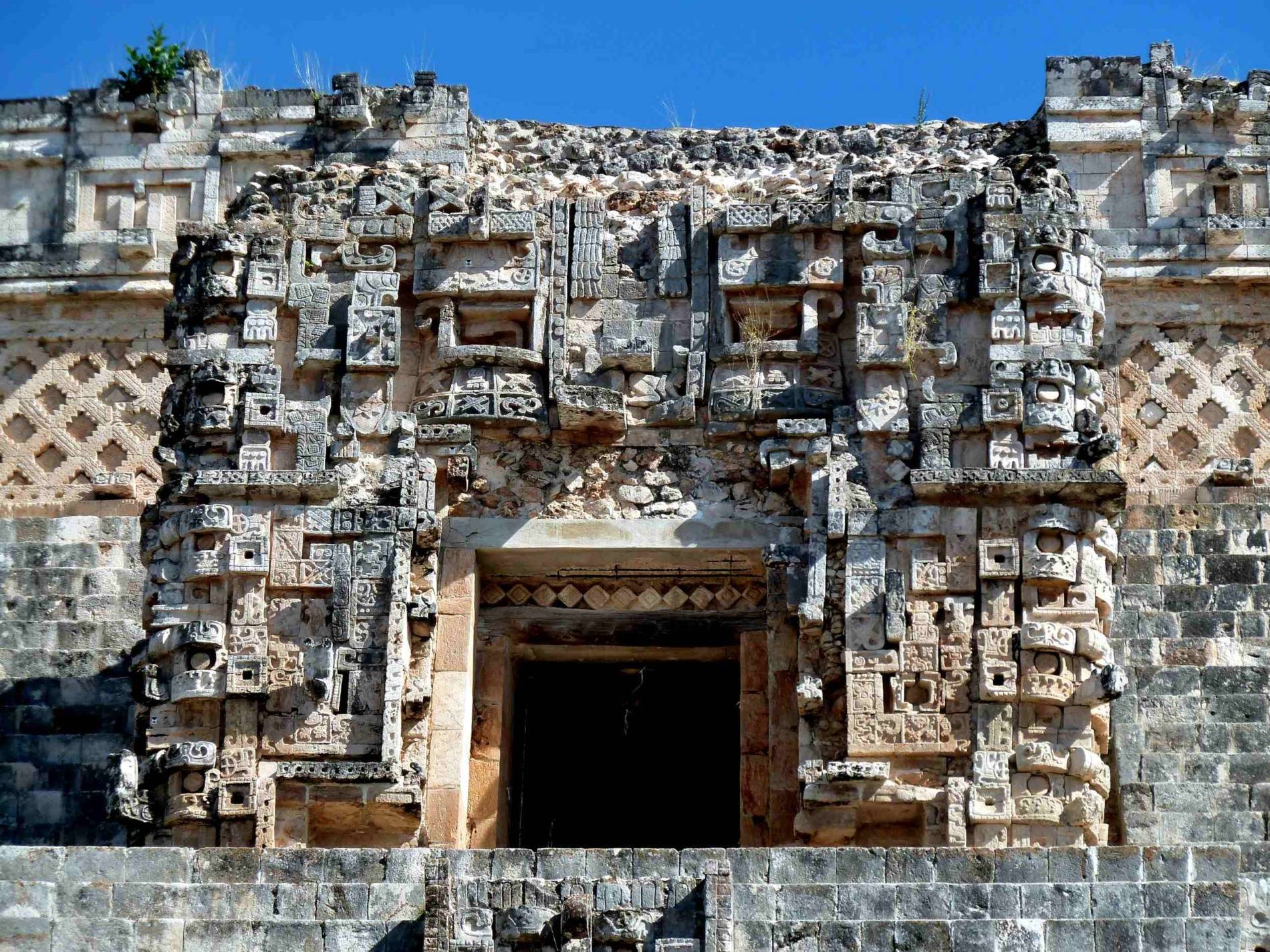Uxmal, situated on the Yucatán Peninsula, stands as a remarkable testament to Mayan architecture and civilization. This ancient city, recognized as a UNESCO World Heritage Site, flourished during the late classical period of Mesoamerica, from the 7th to the 10th centuries. Uxmal is renowned for its well-preserved structures, showcasing the intricate and sophisticated craftsmanship of the Mayan people.
Mayan Ruins Uxmal Yucatán
The layout of Uxmal reflects a distinct Puuc architectural style, characterized by elaborate geometric patterns and decorative elements. The Pyramid of the Magician, an iconic structure at the site, stands tall with its unique elliptical base, representing a departure from traditional pyramid designs. The Governor’s Palace, another key edifice, impresses with its intricate façade adorned with detailed mosaics and stone carvings, depicting various mythological and religious themes.
Uxmal’s prominence is further underscored by the Nunnery Quadrangle, a complex featuring interconnected buildings adorned with Chac masks and other symbolic motifs. The intricate lattice-like design prevalent in Puuc architecture adds to the city’s aesthetic appeal. The Great Pyramid, while not as colossal as some counterparts in other Mayan cities, still commands attention, contributing to Uxmal’s architectural grandeur.
Exploring Uxmal offers a captivating journey through Mayan history, providing insights into their cultural, religious, and artistic achievements. The site’s strategic location within the Yucatán Peninsula adds to its significance, making it a must-visit destination for those intrigued by the mysteries and marvels of ancient Mayan civilization.
Facts about Uxmal
Uxmal, an ancient Maya city in present-day Mexico, stands as a crucial archaeological site representing the classical period of Maya culture. Founded around A.D. 700, the Mayan town of Uxmal thrived with approximately 25,000 inhabitants. The architectural layout, dating between 700 and 1000, demonstrates a sophisticated understanding of astronomy.
The Pyramid of the Soothsayer, a dominant structure in the ceremonial center, showcases well-designed buildings adorned with symbolic motifs and sculptures depicting Chaac, the rain god. Considered alongside ceremonial sites like Kabah, Labna, and Sayil, Uxmal represents the pinnacle of late Maya art and architecture.
The archaeological site, located 62 kilometers south of Merida, holds a central position in the Puuc region, covering approximately 7500 km2 in the south-western part of the Mexican state of Yucatan. This region served as a hub for trade, idea exchange, and likely interactions among people from various parts of Mexico.
Historically, The Books of Chilam Balam, a 16th-century A.D. Maya history, dates Uxmal’s foundation to the later 10th century A.D. Archaeological evidence and radiocarbon dating suggest that the main structures, including hydraulic works like rainwater reservoirs, were built between the 8th and 10th centuries A.D.
Uxmal evolved from a peasant town into a political and administrative center during this period, marked by conflicts evidenced by the town wall, possibly due to the rise of competing urban centers. Abandoned after the 10th century A.D., Uxmal became a place of pilgrimage until the Spanish conquest. Unlike geometrically laid-out towns, Uxmal’s spatial organization aligns with astronomical phenomena and adapts to the site’s topography.
Puuc architecture, with its distinctive division of facades into horizontal elements, features plain lower levels and richly decorated upper levels. Sculptures over doorways, often depicting the head of Chaac, are common. Key structures like the Pyramid of the Soothsayer, Quadrangle of the Nuns, Governor’s Palace, House of the Tortoises, Ball Court, and the Southern Complex highlight Uxmal’s architectural grandeur.
Additional sites like Kabah, Labna, and Sayil, with ongoing investigations, hold immense potential for future insights. After 1000 AD, Toltec invaders took control, leading to the cessation of most buildings by 1100 AD. Founded around 500 A.D. by Hun Uitzil Chac Tutul Xiu, Uxmal was ruled by the Xiu family, dominating the northern Maya area in alliance with Chichen Itza.
The decline after 1200 is associated with the fall of Uxmal’s ally, Chichen Itza, and a power shift to Mayapan. Uxmal’s population declined as the Xiu moved their capital to Man. Dominant from 875 to 900 CE, Uxmal served as the capital of a regional state in the Puuc region from 850–950 CE. The population dispersed around 1000 CE, and after the Spanish conquest, Uxmal’s importance persisted into the 1550s, yet the lack of Spanish town establishment led to its eventual abandonment.

